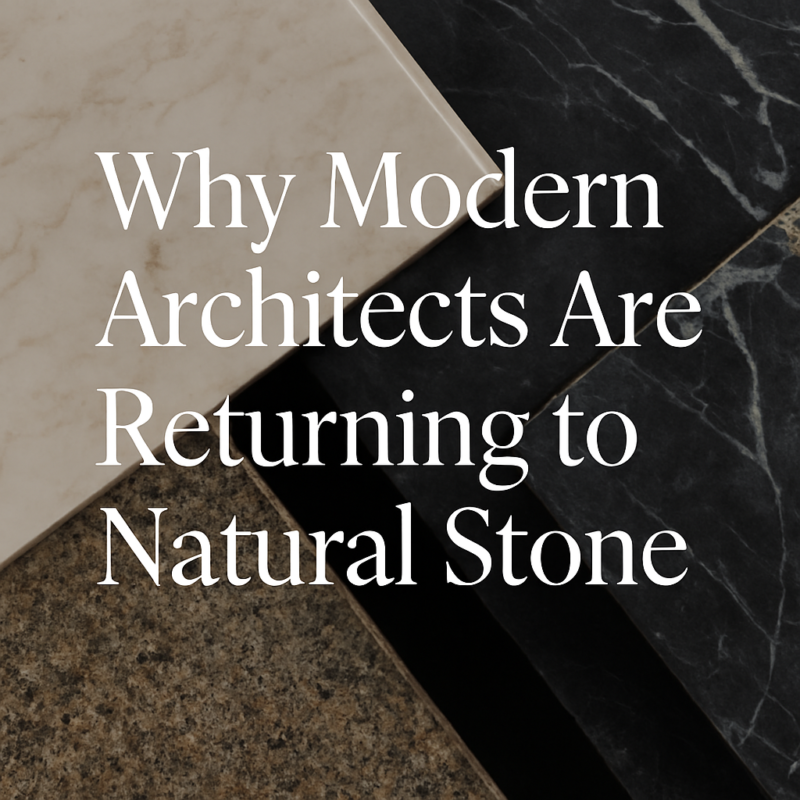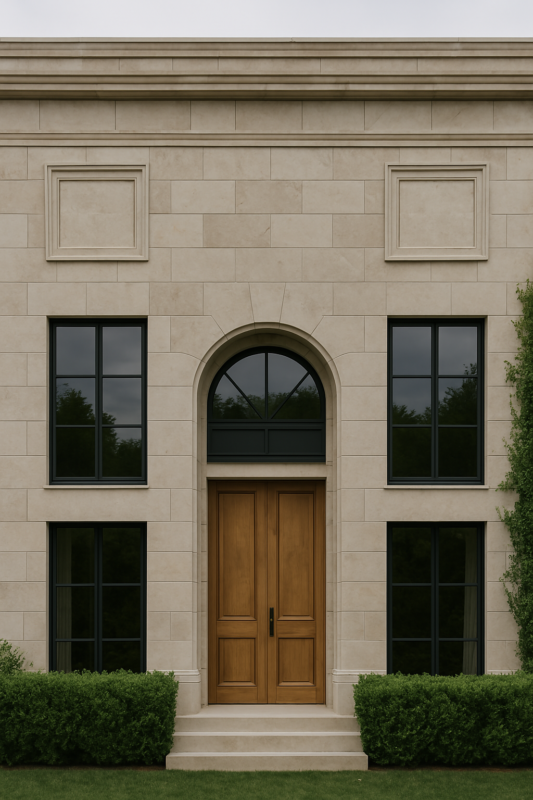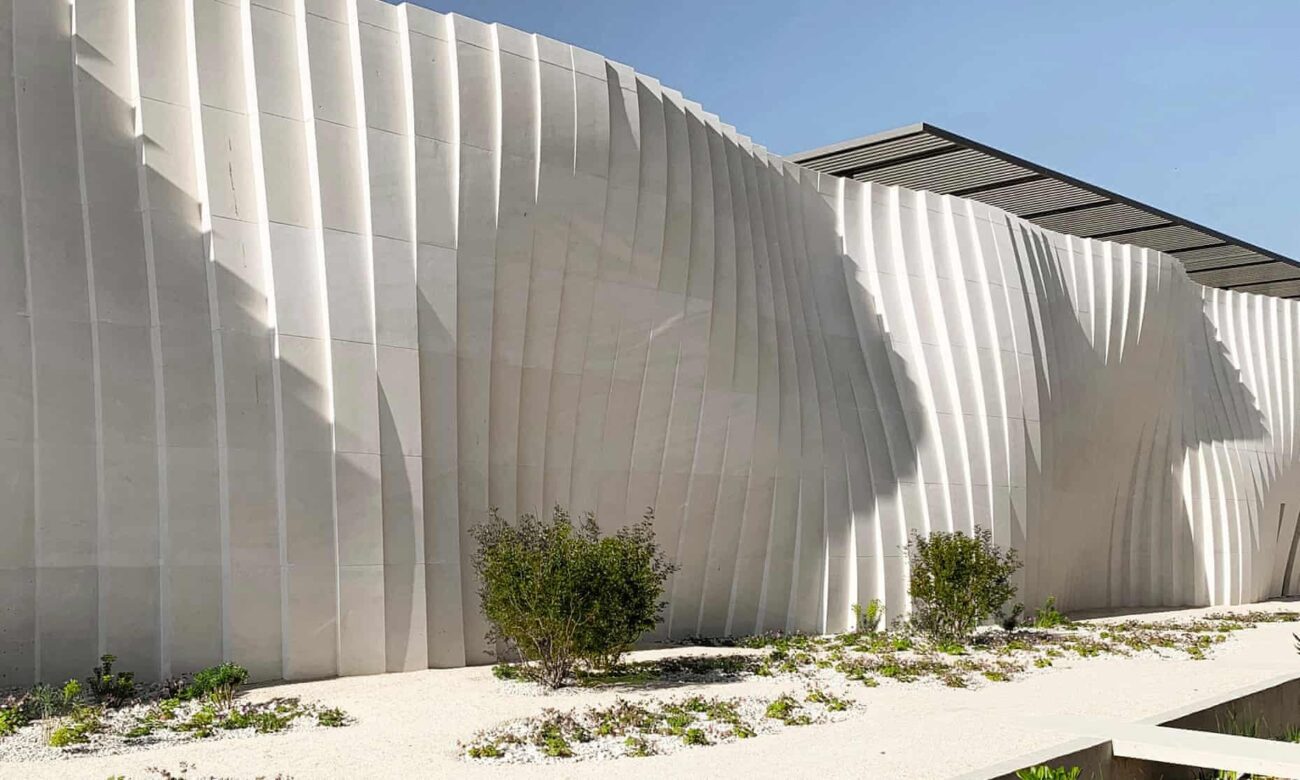- INDEX 2024

4 - 6 June
Dubai World Trade Center, Hall 7, Stand No: 7E291we invite you to witness a renaissance of craftsmanship at the Dubai Index Exhibition 2024. Discover our exquisite facade components and bespoke home & bathroom furniture that tell a story in every grain.
- Home Objects
- Bathroom Objects
Why Modern Architects Are Returning to Natural Stone

In the dynamic realm of contemporary architecture, a notable shift is underway as architects increasingly embrace natural materials, particularly stone, in their designs. This resurgence is not merely a nod to tradition but a deliberate response to modern demands for sustainability, aesthetic longevity, and structural integrity. This article explores the multifaceted reasons behind this trend, highlighting how natural stone is redefining luxury architecture and aligning with modern design principles.
Embracing Sustainability: The Eco-Conscious Appeal of Natural Stone
Sustainability has become a cornerstone of modern architectural practices. Natural stone stands out as an environmentally responsible choice due to its durability and minimal processing requirements. Unlike synthetic materials that often involve energy-intensive manufacturing processes, natural stone is extracted and prepared with relatively low environmental impact. Its longevity reduces the need for frequent replacements, thereby decreasing waste and resource consumption.
Furthermore, the thermal mass properties of natural stone contribute to energy efficiency in buildings. By effectively absorbing and releasing heat, stone helps regulate indoor temperatures, reducing reliance on artificial heating and cooling systems. This intrinsic characteristic aligns with the growing emphasis on passive design strategies in sustainable architecture.

Aesthetic Timelessness: The Enduring Beauty of Stone in Architecture
The visual appeal of natural stone is unparalleled, offering a rich palette of colors, textures, and patterns that synthetic materials struggle to replicate. Each piece of stone carries a unique signature, lending exclusivity and authenticity to architectural projects. This individuality is particularly valued in luxury architecture, where distinctiveness is paramount.
Moreover, natural stone ages gracefully, developing a patina that enhances its character over time. This aging process adds depth and history to structures, resonating with the contemporary desire for designs that tell a story and establish a sense of place.
Structural Integrity: The Enduring Strength of Natural Stone
Beyond aesthetics, natural stone offers remarkable structural benefits. Its inherent strength and resilience make it an ideal material for both load-bearing and decorative applications. In regions prone to extreme weather conditions, stone’s durability ensures longevity and safety, reducing maintenance costs and enhancing building performance.
Additionally, advancements in quarrying and fabrication technologies have expanded the possibilities for using stone in innovative ways. Architects can now achieve complex geometries and precise detailing, merging traditional materiality with contemporary design aspirations.

Biophilic Design: Fostering Connection with Nature
The integration of natural elements into built environments, known as biophilic design, has gained prominence for its positive impact on occupant well-being. Natural stone plays a pivotal role in this approach, bridging the gap between indoor spaces and the natural world. Its organic qualities evoke a sense of calm and connection, enhancing the overall spatial experience.
Incorporating stone into interiors—be it through flooring, wall cladding, or statement pieces—introduces tactile and visual richness that synthetic materials often lack. This connection to nature aligns with contemporary trends emphasizing wellness and holistic design.
Aligning with Modern Trends: Natural Stone in 2025 and Beyond
As architectural trends evolve, the use of natural stone remains at the forefront of innovative design. The year 2025 sees a continued emphasis on sustainability, authenticity, and the use of natural materials. Architects are increasingly drawn to stone for its ability to meet these criteria while offering versatility in application.
– Read about why stone designs are always trendy in this blog.
The trend extends to adaptive reuse projects, where natural stone is employed to blend new interventions with existing structures seamlessly. This approach not only preserves historical integrity but also promotes environmental responsibility by repurposing materials.

Utopia: Crafting Timeless Elegance with Natural Stone
In the landscape of luxury architecture, Utopia stands out as a purveyor of exquisite natural stone products that embody the principles discussed. Their offerings range from meticulously crafted wash basins to statement furniture pieces, each showcasing the inherent beauty and versatility of stone. By seamlessly integrating traditional craftsmanship with contemporary design, Utopia provides architects and designers with the tools to create spaces that are both timeless and innovative.
Utopia’s commitment to quality and sustainability reflects the broader architectural movement toward natural materials. Their products serve as exemplars of how stone can be utilized to achieve aesthetic distinction and environmental harmony in modern design.
In conclusion, the renewed embrace of natural stone by modern architects is a testament to its enduring relevance and multifaceted benefits. As the architectural community continues to prioritize sustainability, aesthetic longevity, and structural integrity, natural stone remains an indispensable material in crafting spaces that resonate with both history and innovation.

This resurgence of natural stone is a welcome change—materials that tell a story over time seem to resonate more in today’s fast-paced design world. It’s less about trends and more about enduring beauty.